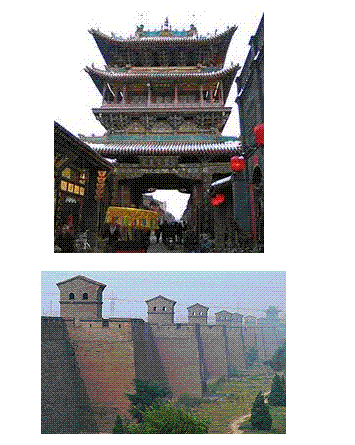I visited China in 2005 and 2007. In addition to seeing Shanghai and Beijing, I got an opportunity to see many historical sites, including Ping Yao. Ping Yao is 14th century well preserved walled city in the Shanxi Province of central China. At one time, it was the financial center of China during the Qing Dynasty.

During my visit, I visited a couple of banks in Shanghai with one of my mortgage banking clients who speaks Mandarin. He acted as my interpreter as I quizzed the bank managers of the two banks. My objective was to get some information on if and how banks were providing financing for the rapid growing real estate market. At this time, there was a boom in condo construction in Shanghai and they were selling as high as 2 million dollars. The government had recently loosened up ownership rights, and individuals were able to buy property under fee simple rights.
China is still a Communist political and economic country managed by a strong central government. Though people were able to purchase fee simple rights in properties and obtain loans to finance the acquisition of properties, government can intervene at any time for the “betterment of the population and economy”. Here are some of some of those controls they used to regulate the real estate and mortgage space:
- Interest Rates: The government sets the interest rates for real estate loans through commercial banks. At the time of my visit, there was no secondary mortgage market and banks provided all the financing for residential loans. Most if not all the banks were majority owned by the government. At any time, the government could raise and lower mortgage rates.
- Refinancing: The government imposed specific regulations on refinancing. I learned that if a borrower wanted to refinance, he must first pay the existing loan off in full. In other words, the property needed to be lien free before a new loan could be made. The concept was to slow down speculators from using rapid appreciation to finance the acquisition of more properties.
- Property Flipping: During this time, the government was concerned with investors buying new property and flipping them before the properties were completed. I learned that the government had recently imposed, overnight, a “cooling off” period of 1 year before a property could be sold. In short, you had to own a property for a minimum of 1 year before you could sell it.
So why am I sharing my China travel stories with you. In short, there are some parallels, though a different motivation, with the two governments’ intervention in the real estate and mortgage space. Two things come to mind:
- Secondary Mortgage Market: The US government now owns and controls the two largest secondary market conduits – FNMA and FHLMC. The business strategies and policies are very much controlled by the government. Could we wake up one day to find the GSEs not interested in issuing guarantees on securities backed by mortgages originated by TOPs.
- Interest Rates: Currently the Fed has been the primary purchaser of mortgage backed securities. In order to keep mortgage rates low, they are buying these securities at below market rates. When they stop buying mortgage related bonds, most believe interest rates sky rocket from current level.
China’s intervention was to slow a real estate boom down and create a governor on speculation. The US current intervention was to help curtail the bust in real estate and stimulate economic growth. Will the temporary invention of the US government be a more long term policy? Have we moved to a more centralized economic oversight system? Your thoughts?







